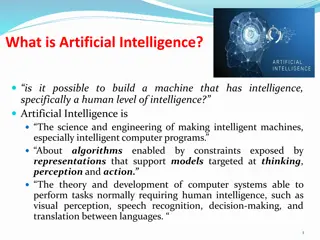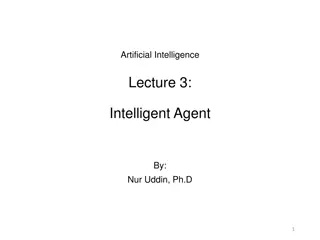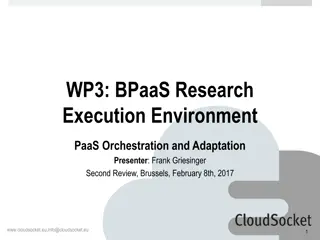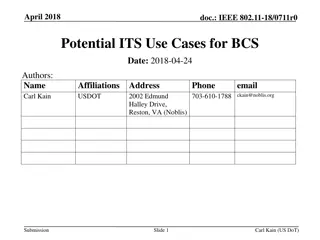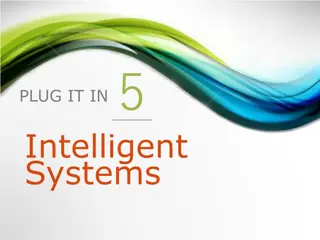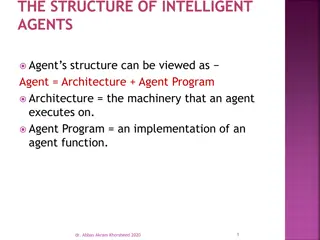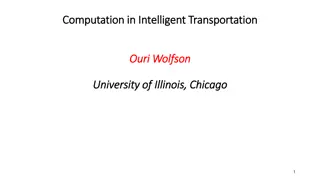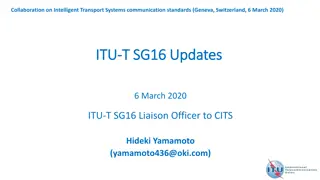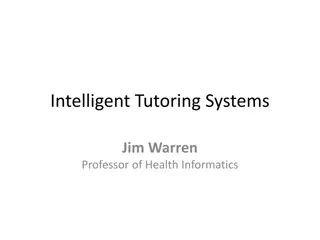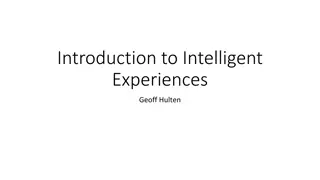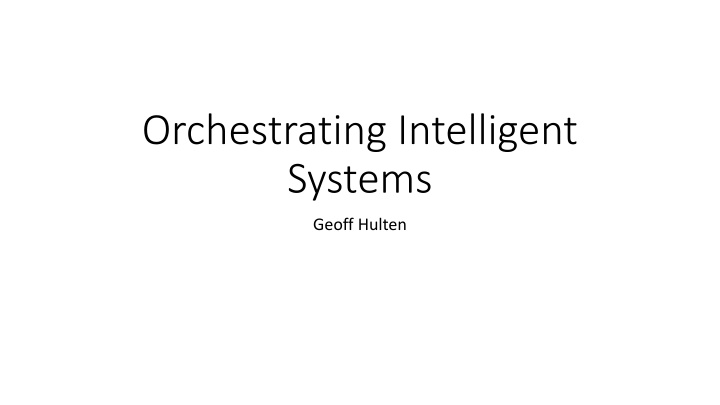
Intelligent Systems Orchestration and Mistakes Prevention
Explore the importance of orchestration for intelligent systems, the role of domain experts in the orchestration team, sources of mistakes in system implementation, and tools for effective orchestration and monitoring. Gain insights into maintaining balance between experience, intelligence, and objectives to achieve success in deploying intelligent systems efficiently.
Download Presentation

Please find below an Image/Link to download the presentation.
The content on the website is provided AS IS for your information and personal use only. It may not be sold, licensed, or shared on other websites without obtaining consent from the author. If you encounter any issues during the download, it is possible that the publisher has removed the file from their server.
You are allowed to download the files provided on this website for personal or commercial use, subject to the condition that they are used lawfully. All files are the property of their respective owners.
The content on the website is provided AS IS for your information and personal use only. It may not be sold, licensed, or shared on other websites without obtaining consent from the author.
E N D
Presentation Transcript
Orchestrating Intelligent Systems Geoff Hulten
Refresher: an Intelligent System Implementation Intelligence Management Verify new intelligence Control rollouts: Keep in sync Clients/services Support online evaluation Intelligence Runtime Intelligence Creation Environment Intelligence Orchestration Achieve Objectives Over Time Balance: Experience, Intelligence, & Objective Mitigate Mistakes Effectively Scale Efficiently Degrade Slowly Program State -> Context Execute Feature Code Execute Model Interpret Model Output Control User Experience Update: Models Feature Code Telemetry -> Context Feature code in sync Computation & Data All the training stuff Telemetry Verifying outcomes Training data Selecting what to observe Sampling Summarizing
Why Orchestration is Needed Objective Changes Understand Problem Better Solved Previous Objective Decide Problem Too Hard Intelligence Changes More Data -> Better Models More Accurate Modeling Less Accurate Modeling Users Change New Users Come Usage Pattern Changes Users Adapt to Experience Users Leave Costs Change Telemetry Costs Mistake Costs Abuse
Orchestration Team Needs Domain experts in the business of the system Understand users experience Understand the implementation Can ask questions of data Applied Machine Learning Desire for Operational Excellence
Mistakes Sources of Mistakes System Outage Something unrelated to the models Model Outage Corruption or things get out of sync Model Mistakes Standard errors FPs/FNs Model Degradation Errors that develop slowly as things change Find the worst thing
Tools for Orchestration Monitoring Success Criteria Inspecting Interactions Balancing the Experience Overriding the Intelligence Creating new Intelligence
Monitoring Success Criteria What Business Objectives How Ad hoc Write scripts to query logs Tool-Based Accessible to non-data scientists Automated Dashboard updated regularly Alert-Based Flag on major change rapid or sustained Population Tracking Slice and dice by user segments Leading Indicators User Outcomes Model Properties
Inspecting Interactions What Find specific events How Ad hoc Query & join across multiple logs Interpret numeric data as experience Tool Non-data scientists query for interactions & see all relevant data Browser Find interactions and visualize experience / outcomes Live Interaction Inspection Inject queries to users in context Observe the: Context -> features Live model outputs Resulting experience Outcome
Balancing Experience What How Ad hoc Implement and deploy code Parameter Updates Thresholds Frequencies Colors Text Etc. Experience Alternatives Swap between experiences dynamically Dynamic Experience Updates Experience in data (similar to model) Connect intelligence to experience Frequency Forcefulness Actions Taken Value Mistakes
Overriding Intelligence What How Ad hoc Hack the learning process/models Intelligence Feed High priority intelligence in code Tool Based Identify context to override Stats on it Tracking over time Managing lifecycle Support Tier Mitigate Critical Mistakes Implement Guardrails Lock in Good Behavior
Creating New Intelligence Intelligence Management How rapidly updated Where lives How Combined New Models/Features Intelligence creation environment Support for updating features Adding new models Automated Training Data to use Frequency of training Training parameters Modeling resources Telemetry Systems Gather new training data Sampling rate Summarization / Retention
Summary Machine Learning system live over time Successful Orchestration Achieve Objectives over Time Balance: Experience, Intelligence, & Objective Mitigate Mistakes Effectively Scale Efficiently Degrade Slowly Many reasons they will need to change People who built the system aren t always best to run it Tools for Orchestration Monitoring Success Criteria Inspecting Interactions Balancing the Experience Overriding the Intelligence Creating new Intelligence







